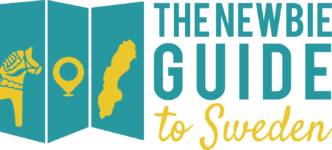Oj in Swedish? When do you use it? Is it possible to pretend to understand Swedish? We think so. When you’re new to any country with a language other than your mother tongue, there will be a period where you know enough of the language to get yourself into a conversation, but not enough to understand what is being said or how to respond. In these scenarios, the smile-and-nod technique is often used.
Here are a few words and key phrases you can sprinkle into the conversation with the old woman on the subway in between smiling and nodding. Use these phrases to buy yourself some time to give your brain a chance to catch up and translate what is being said.
(Disclaimer: pretending to understand Swedish will make Swedes visibly upset if they discover that they’ve spent the past five minutes divulging their life story to someone who only knows the words “hej” and “nej” so use your discretion.)
Oj in Swedish (pronounced like “oy”)
“Oj!” is a common response to stories that are happy, sad, or unbelievable. The number of oj’s you use in a sentence can increase depending on the severity and tone of the discussion. It’ll buy you some time to continue reading their facial expressions to see how you should react.
“I got married this past weekend.”
“Oj!”
“My daughter fell and broke her leg while sledding.”
“Oj! Oj!”
“My mother died last week.”
“Oj, oj, oj!”
Okej, ja—Okay, yes.
Again, use this one when you want to acknowledge someone and agree with them. Smile and nod away.
Ha det bra—have a good one or take care (informal goodbye)
Pronounced, “hah deh brah” and best used when saying goodbye to your child’s preschool teacher at förskola, neighbors, or anyone you want to wish a good day too. They’ll totally think you speak Swedish if you throw out this casual phrase.
Trevlig helg—have a good weekend
For the love of all that is holy, do not pronounce the g! Pronounced, “treavlih helh” with a little lilt in between the two words and your Swedish friends will most likely reply with, “Detsamma” or same to you. Stop the interaction there, smile, and wave goodbye. Walk away before they realize how much you don’t know.
Jo—yes to a negative statement
I always forget about this one because I usually reply with a “ja” to mean yes but to really trick a Swede into thinking you’re fluent, you should jump in with a jo (pronounced “yo”) when answering yes to a negative. Jo is most often used with young children who commonly say no to their parents when they should be saying yes.
“Please drink your milk.”
“No.”
“Jo.”
Vad sa du?—what did you say?
Use this phrase when your brain is screaming, “Stall! Stall! Stall!” for extra translation time. Keep your mouth open when you say all of these words and pronounced them, “vah sawh dooo?”
Förlåt, jag förstår lite svenska—I’m sorry, I understand a little Swedish
Pronounced “four-loat jah forshtor liteh svenskah.”
I’ve used this phrase so often that my pronunciation has improved over the years and now Swedes don’t believe me when I admit that I don’t understand what they’re saying. They kind of laugh and pat me on the arm and continue in rapid Swedish. Time to whip out phrases 1-6 in random order.
Pro tip: Any time you need to buy more time, elongate your pronunciation of any of these words, smile, nod, and then smile again.
Best of luck navigating the Swedish language waters and if you want to actually learn some Swedish, we recommend our Swedish for beginners online course.
Lisa Ferland is a US citizen who has been faking her way through Swedish conversations for the past five years. Read her Knocked Up Abroad book series to discover more stories about multicultural pregnancy, birth, and parenting abroad experiences.
Written by Lisa Ferland
Lisa Ferland is a US citizen who has lived in a small Swedish town for nearly five years. She has published two anthologies about the cultural differences experienced during pregnancy, birth, and parenting abroad called the Knocked Up Abroad series. Find more on her blog here.



Let‘s not forget about:
Juste!
Absolut!
Precis!
Jaha!
Nähä?!
Aa
På riktigt?!
Nej men vad? („Nämen va“)
And last but not least: Tja då („tjarro“)
Åh fan! Just saying.
The key to get into any conversation.
Makes people think you know Swedish like a native. So use it with caution, because now they know that you for sure understand. The conversation will probably both faster and more advanced. But just throw in any of the suggestions above combined with ”åh fan”. Happy conversations to all of you newbies in Sweden.